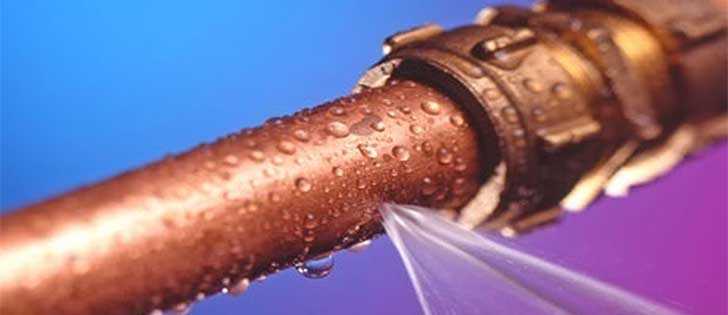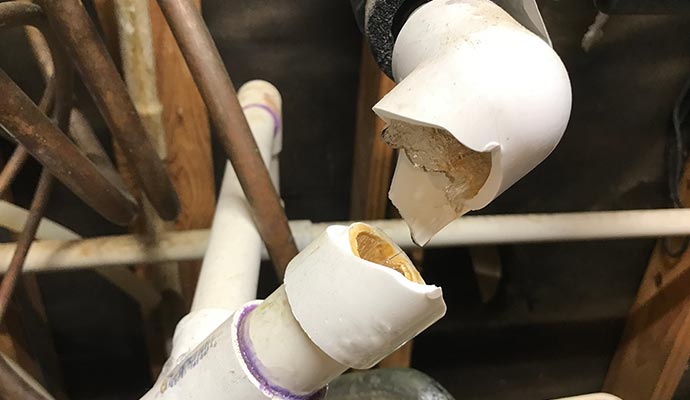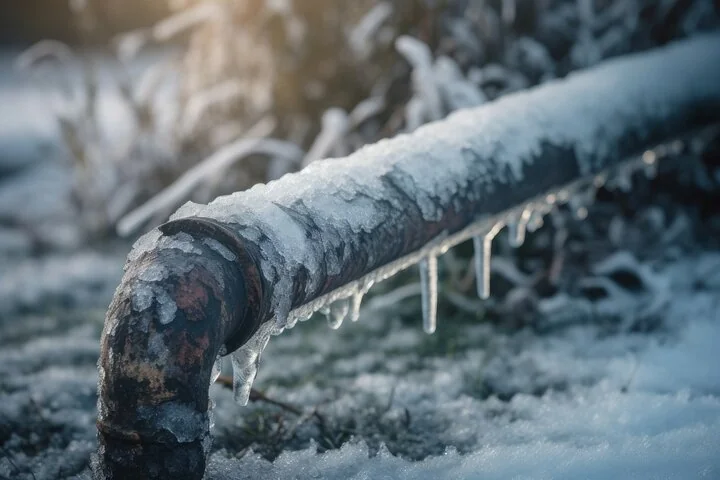Burst Pipe Insurance Claims: What You Need to Know for Water Damage Coverage
Burst Pipe Insurance Claims: What You Need to Know for Water Damage Coverage
Blog Article
Stopping Burst Piping: Crucial Tips to Protect Your Plumbing
Stopping burst pipes is an important concern for property owners, particularly during cooler months when the risk of freezing is enhanced. Carrying out calculated procedures such as appropriate insulation, regular assessments, and keeping constant interior temperatures can considerably lower the probability of pipeline failing. Additionally, recognizing emergency situation procedures outfits property owners to respond swiftly to potential pipes issues. However, lots of are not aware of the particular vulnerabilities that their pipes might encounter. Checking out these susceptabilities can supply important understandings into safeguarding your plumbing system properly.
Understand Pipeline Vulnerabilities
Understanding pipeline vulnerabilities is vital for effective pipes upkeep and preventing pricey damages. Several elements contribute to the vulnerability of pipelines to ruptureds, consisting of product make-up, age, and environmental problems. Older pipelines, particularly those made from galvanized steel or polybutylene, usually deteriorate gradually, resulting in raised danger of tears and leakages.
Temperature level variations can additionally dramatically influence pipeline stability. In cooler climates, water entraped in pipelines can freeze, expanding and putting in stress on the pipeline wall surfaces, which may inevitably bring about a burst. High water stress can strain pipelines, especially at bends and joints, increasing the probability of failure.

Insulate Piping Effectively
Proper insulation of pipes is vital for protecting against freezing and subsequent bursts throughout cool weather (burst pipe). Insulating your pipes system efficiently safeguards against temperature drops that can cause costly damage. Begin by recognizing at risk locations where pipelines are exposed to outdoor temperature levels, such as cellars, attic rooms, and outside walls
Usage foam pipe insulation sleeves or wrap insulation tape around these locations to provide a safety barrier. Make sure that all sections of the pipes, particularly those with minimal heat exposure, get appropriate insulation. Pay unique interest to joints and installations, as these are more vulnerable to cold.
When shielding, it's important to pick products that fulfill local building regulations and are proper for the certain environment. As an example, fiberglass insulation is commonly recommended for its thermal resistance homes - burst pipe. In addition, consider using warmth wires or tape in severe problems, which can be connected in to give supplemental warmth
Regularly evaluate shielded pipes for any indicators of wear or damage, as compromised insulation can decrease its effectiveness. By taking these aggressive steps, you considerably minimize the risk of pipe ruptureds, making sure a trusted plumbing system throughout the winter months.
Maintain Consistent Temperature
A stable indoor temperature level is essential for stopping burst pipelines throughout the freezing months. When temperature levels decline, water within pipes can freeze, broadening and producing pressure that might inevitably cause the pipelines to burst.Making use of a programmable thermostat can help take care of indoor temperature levels efficiently, making sure that areas with pipes stay warm even when the residence is unoccupied.
This small flow of water can avoid cold by reducing pressure within the pipelines. By carrying out these techniques, property owners can dramatically decrease the threat of pipeline bursts and safeguard their pipes systems against the harsh winter elements.
Consistently Evaluate Plumbing
Routine assessments of plumbing systems are crucial for protecting against burst pipelines and preserving total home stability. Routine checks permit homeowners to determine potential problems before they intensify into expensive fixings or major water damage. During these evaluations, it is necessary to take a look at visible pipes for signs of deterioration, leaks, or use. Pay special interest to areas vulnerable to cold, such as basements, attic rooms, and exterior walls.
Furthermore, examining connections and joints is important, as these factors are often at risk to leaks. Homeowners must also evaluate water stress degrees, as excessive stress can strain the plumbing system and boost the threat of pipe bursts.
Take into consideration organizing professional plumbing inspections at the very least annually, specifically prior to winter season, to guarantee your system is gotten ready for cooler temperature levels. Routine examinations not just assist in recognizing instant problems but additionally foster lasting maintenance approaches that can enhance the life expectancy of your pipes system. By being proactive in your method, you can protect your home article against the disruptive and expensive consequences of burst pipes. Prioritizing plumbing assessments is a financial investment in your house's health and wellness.
Know Emergency Situation Treatments
Understanding emergency situation procedures is essential for every single house owner, especially after performing regular plumbing evaluations. Being prepared for a plumbing emergency situation can significantly mitigate damage and conserve expenses. Find your primary water shut-off shutoff; it is commonly discovered near the water meter or where the main line enters your home. Familiarize yourself with its procedure, as shutting down the water supply swiftly can stop extensive flooding.
Next, maintain crucial tools useful. A pipes emergency situation kit should consist of a wrench, plunger, and towels, along with a flashlight and a container for little leakages. Additionally, take into consideration having the get in touch with straight from the source details for a relied on plumbing readily offered, should the circumstance escalate past your control.
If you discover a leakage or ruptured pipeline, instantly turn off the water system and notify your plumber. In addition, record the damages with photos for insurance objectives. burst pipe. Understand the indications of potential plumbing concerns, such as uncommon water stress fluctuations or damp spots on wall surfaces
Eventually, aggressive knowledge and quick activity are important in managing plumbing emergency situations, guaranteeing your home stays secured and decreasing potential damage.

Verdict
To conclude, avoiding ruptured pipelines requires a complex method that includes understanding pipeline susceptabilities, correct insulation, keeping consistent indoor temperatures, regular evaluations, and expertise of emergency procedures. By applying these essential strategies, the risk of pipes failures can be significantly reduced, thereby making sure the long life and effectiveness of the pipes system. Positive actions not only secure versus potential damage but likewise contribute to general water conservation and the security of building.
In cooler environments, water caught in pipelines can ice up, broadening and putting Check Out Your URL in pressure on the pipeline wall surfaces, which might ultimately lead to a burst. When temperature levels decrease, water within pipelines can ice up, expanding and creating pressure that may inevitably trigger the pipes to ruptured. By carrying out these strategies, home owners can substantially lower the danger of pipeline bursts and secure their pipes systems versus the extreme wintertime aspects.

Report this page